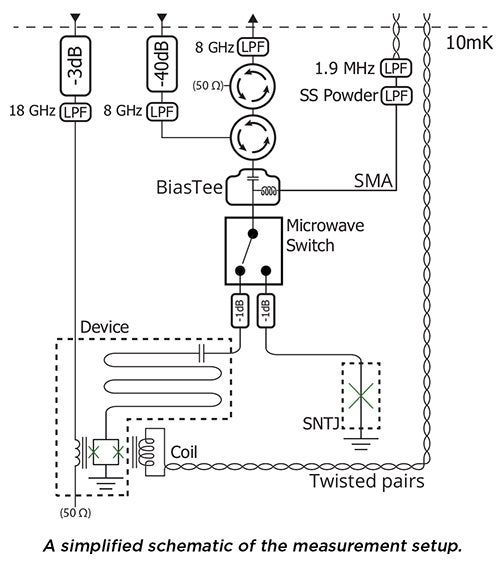A step further for secure quantum communication and scalable quantum computing
A team of researchers at the Institute for Quantum Computing (IQC) generated three-photon entanglement on a superconducting chip using a new, scalable technique.
The experiment, published in Physical Review Applied, could lead to advances in quantum communication protocols like secret sharing and in quantum computing power.
“Broadly, we want to distribute entanglement,” said IQC Professor Chris Wilson, who led the study with the Engineered Quantum Systems Lab (EQSL) team. “That could mean extending it over very long distances for secure communication, or it could also mean distributed entanglement on a quantum processor to different sections of a computer chip.”
To generate multiphoton entanglement the team relied on quantum states of microwave light operating at frequencies near 5 GHz-- the same frequency band as wireless communications used by cellphones and Wi-Fi connections. The team designed a special superconducting circuit that acts as a microwave cavity.
“The cavity is like a box for storing photons,” explained Wilson, also a professor in the Department of Electrical and Computer Engineering at the University of Waterloo. “This box can hold photons of a number of different frequencies."
The photons are entangled on the chip when high-frequency magnetic fields are applied to a superconducting quantum interference device (SQUID) integrated into the cavity, a process known as parametric down conversion. This changes the system’s electrical properties and, as a result, also the frequency of the photons in the microwave cavity.

“If we apply a magnetic field at the sum of two cavity frequencies, the photons that are created each go into one of two modes, producing two photons of different frequencies, or different colours, but they are still entangled.” Wilson uses the analogy of a dancer dressed in red and another dressed in blue, but they are still moving in synchrony.
In the experiment performed at IQC, the EQSL team demonstrated three-photon entanglement. The new method, however, is easily extendable for adding more entangled quantum states.
In addition to applications in performing secure quantum communication protocols, the results yield promising engineering advances for building a superconducting quantum computing platform.
This research was undertaken thanks in part to funding from the Canada First Research Excellence Fund.